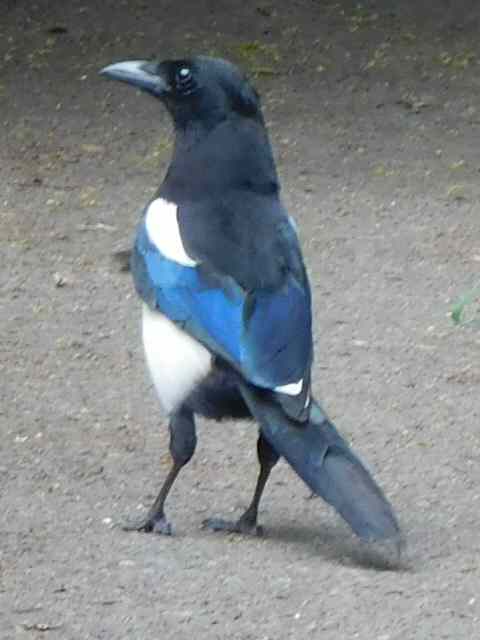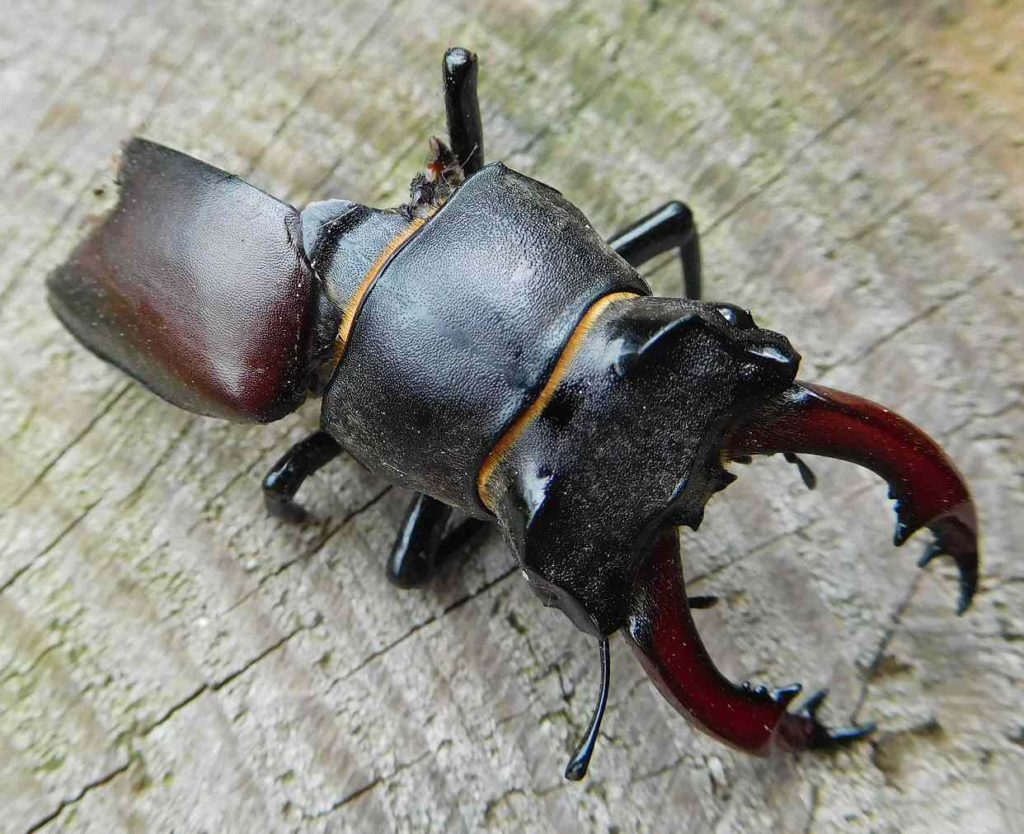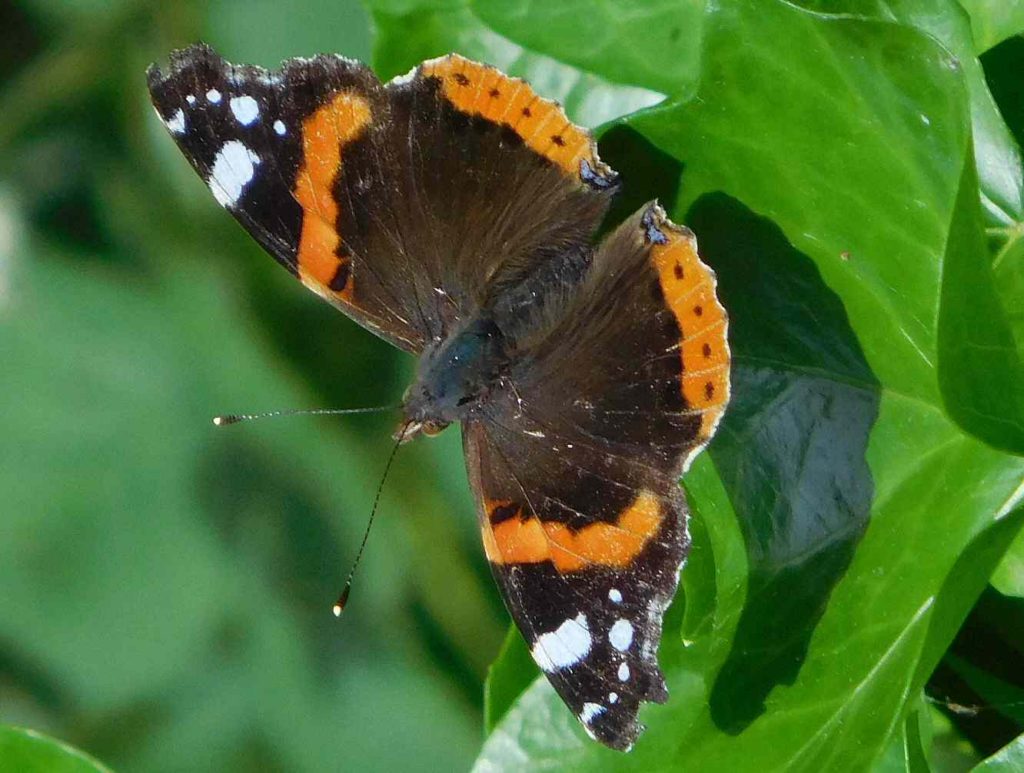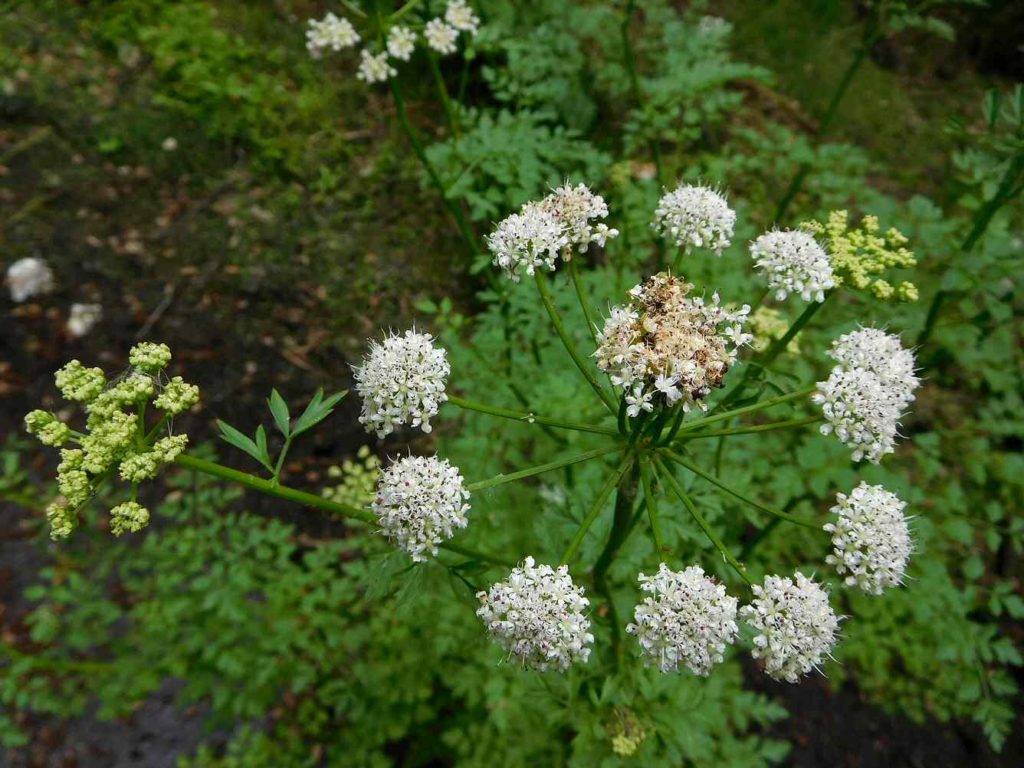Caution: this article contains no blood, but one of the photographs of an insect could be upsetting to sensitive readers.


Magpies are rather omnivorous predators, feeding on whatever they can catch – the eggs of other birds are a favourite, along with chicks, and the juicy caterpillars and larvae of insects. Unlike foxes, which will crunch up even large beetles whole (leaving wing-cases and other recognisable body parts in their droppings), they feed selectively, eating the soft abdomen of large beetles like the Stag Beetle, and abandon the heavily-armoured thorax and head. The beetles, their bodies broken and their chances of reproduction gone, clamber slowly and pitifully about, sometimes for days.

On a happier note, we saw a Red Admiral resting in the woods on some Ivy. The Nymphalid butterflies are all getting scarce, so it was a welcome addition to the usual suspects — Brimstone, Small White, Speckled Wood, Holly Blue — on a day without much sunshine to bring the butterflies out.


